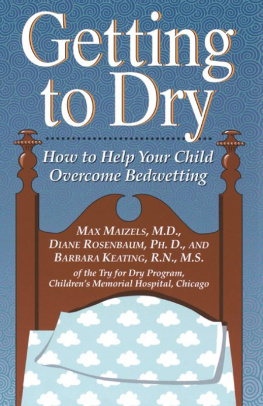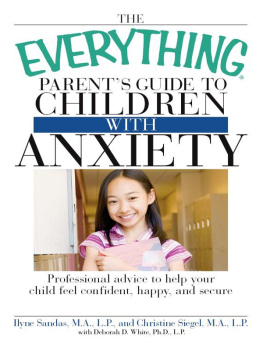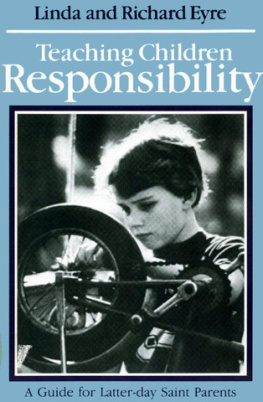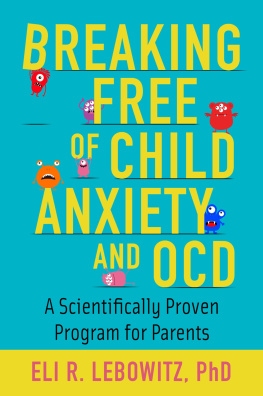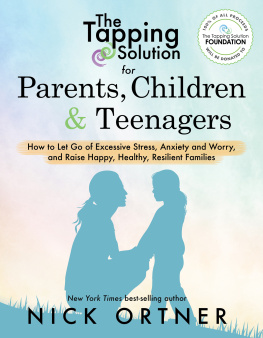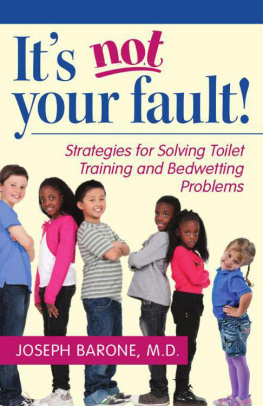All matters regarding your health or your children's health require
medical supervision. The authors and publishers disclaim any liability
arising, whether directly or indirectly, from the use of this book.
The Harvard Common Press
535 Albany Street
Boston, Massachusetts 02118
Copyright 1999 by The Harvard Common Press
Illustrations 1999 by Susan Aldridge
All rights reserved. No part of this publication may be reproduced or
transmitted in any form or by any means, electronic or mechanical,
including photocopying, recording, or any information storage or
retrieval system, without permission in writing from the publisher.
Printed in the United States of America
Printed on acid-free paper
Library of Congress Cataloging-in-Publication Data
Maizels, Max.
Getting to dry : how to help your child overcome bedwetting /
Max Maizels, Diane Rosenbaum, Barbara Keating,
p. cm.
Includes index.
ISBN 1-55832-130-6 (hardcover : alk. paper).
ISBN 1-55832-131-4 (pbk. : alk. paper)
1. EnuresisPopular works. I. Rosenbaum, Diane.
II. Keating, Barbara. III. Title.
RJ476.E6M34 1999
618.92'849dc21 97-36913
CIP
Special bulk-order discounts are available on this and other Harvard
Common Press books. Companies and organizations may purchase
books for premiums or for resale, or may arrange a custom edition, by
contacting the Marketing Director at the address above.
Cover design by Kathleen Herlihy-Paoli, Inkstone Design
Text design by Joyce C. Weston
Illustrations by Susan Aldridge
10 9 8 7 6
This book is dedicated to all the children
who have suffered humiliation, shame, or
even punishment because they wet, by day
or by night, and to all the children who are
trying to overcome their wetting problem
and get to dry.
The authors are deeply grateful for the help
and support of their families over the years:
Evelyn and Michael W. Maizels,
Joel and Julia Resnick, and Bill, Katie,
and Nicole Keating.
Preface
By Max Maizels, M.D.
T HIS BOOK is a guide for parents and children who are trying to cope with and overcome nighttime wetting, daytime wetting, or both. Drawn from the experience of our team of wetting specialists who have helped hundreds of families with similar problems, the methods and practical advice offered here are designed to put the control largely in your hands. We will show you first how to understand and then how to resolve your child's wetting condition. Along the way, you will need to consult a health professional, but you will help direct the treatment: you will determine the likely causes of your child's wetting, and you will develop a strategy for solving the problem and helping your child learn to stop wetting. In the end, you, and your child who wets, will master the attitude and techniques that will ensure long-term success.
In order for your child to begin making progress toward complete dryness, youand any others involved in the care of your childneed to understand that overcoming wetness can be a major undertaking. There are no simple solutions. Our approach requires a relatively small contribution of your time before you see results. However, considering how much time and effort you probably now spend dealing with the problem, we think the investment is worth it. Our experience has clearly shown that the children and families who are most committed to changing their situation are the ones who most often succeed in doing so.
Other adults who interact with children will also find our approach useful. We believe our program will be especially helpful to:
- schoolteachers and day-care providers
- mental health professionals
- health-care professionals, especially pediatricians, pediatric nurses, and school nurses
- counselors at overnight or day camps
- leaders of youth activities for girls or boys
- coaches, especially in leagues that involve travel
- grandparents
- teens who babysit
To all those who care for children, we have a simple request. Respect the dignity of those who wet; they do so not because they choose to be wet, but because they haven't yet learned how to be dry. This book can help you teach them.
The Try for Dry Program
In August 1983, crowded inside a sweltering Chicago apartment, a small group of newly trained Children's Memorial Hospital doctorsincluding Dr. Diane Rosenbaum, Dr. Mark Stein (now at the Children's National Medical Center in Washington, D.C.), and myselfand our spouses sat eating pizza. I had just finished four years of surgical training at Northwestern University's Department of Urology and eagerly awaited the surgical challenges of reconstructing the all-too-common birth defects of children. I explained to the others that one major, unexpected problem nagged at me, one for which most doctors, including myself, are not prepared: how to help children who wet at night.
Diane revealed similar difficulties with her patients: "If only I could be sure that the children didn't have urological birth defects, I bet I could get them dry." I replied: "If only / could be sure that the children didn't have important psychopathology, I bet / could get them dry." The spark of an idea seemed to crackle in the room: We should work together, urologist and psychologist, to pool our expertise and bring to bear on the problem a comprehensive treatment program.
In the 1980s, such collaboration on wetting problems was unknown. Physicians simply had not organized their resources into a recognized, proven method to evaluate, diagnose, and treat the condition. Medical students and residents received no formal training in wetting disorders. Practitioners recognized that some unknown number of children wet because of birth defects of their urinary tract (a malpositioned ureter, say, or a blocked bladder), so they at least could try to rule out this problem in their patients by referring them to a pediatric urologist. Every now and then, in turn, a pediatric urologist would find a birth defect and correct it surgically, enabling the child to become dry. This very good experience led physicians to refer more and more children who bedwet to urologists. However, the majority of those children simply did not need surgery. So pediatric urologists were "stuck" with boatloads of wet children for whom surgery was not the answerbut we had no clear course to follow. Parents were equally at a loss for ways to help their wet children.
At first I tried the treatments I had seen others useand hoped for the best. But such traditional methods were inconsistent and unpredictable. Sometimes moisture alarms attached to the child's underwear worked, but sometimes not. Sometimes medications worked, but they also commonly caused problematic weight loss, sleeplessness, and hair loss. Also, I wanted to be certain that I was not overlooking important psychological issues in the lives of the children and their families.
So, after nurse and parent educator Barbara Keating, R.N., M.S., came on board, we three authors set out as a team to evaluate and treat children with wetting problems.
It took about five years to develop and refine our approach, which targets four causes of wetting:
| Problem | Solution |
| Deep sleep | When asleep, the child wears a moisture alarm that sounds at the first drops of urine. |
| Small bladder capacity | The child takes a medication that lessens the feeling of urgency to urinate. |
| Irregular bowel movements | The child follows a toileting regimen to encourage daily bowel movements. |
| Food sensitivities | By following an elimination diet, the child tries to isolate foods that may hinder bladder control. |
Next page
